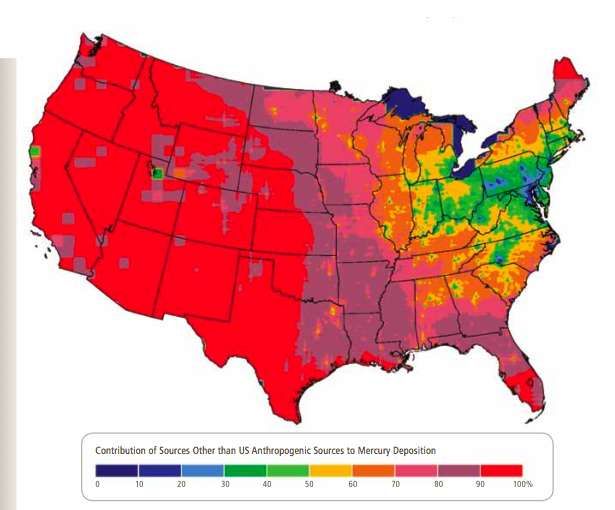On a clear day
This morning brings two articles, one from the Merc, and one from the Chron, about a report (link goes to a 15 MB PDF) issued by the San Francisco Estuary Institute about the health of the bay.
The coverage of these issues is as interesting to me as the issues themselves. The news is that suspended sediment in the Bay has dramatically decreased since 1999, which will allow sunlight to penetrate more deeply and stimulate the growth of phytoplankton. This sediment is a legacy from the Gold Rush, when hydraulic mining blasted away entire mountainsides, and mercury was used to separate the gold. While this sounds like a good thing, excessive phytoplankton growth can, when the dead plants sink to the bottom and decay, use up so much oxygen that fish can no longer breathe. Both articles highlight this danger, but the Chron is much more pessimistic, with its headline dourly proclaiming “A Clear and Present Danger: S.F. Bay’s slide in mud worries scientists.” The Merc is a bit more upbeat, saying that more phytoplankton can increase the total amount of life in the Bay, that the need for dredging navigational channels could be reduced, and that more sunlight might hasten the breakdown of methylmercury to its elemental form.
The online responses to article in the Chron seem to take issue with the dire warnings, mostly following along the same lines as this one
Why is the bay getting closer to its “natural” state a bad thing. Everyone is trying to keep the status quo.
Nature will adapt again, please butt out an[d] quit pretending we can stop evolution.
But I had to read both articles to put the bigger story together. A certain level of sediment is “natural,” and necessary for some species, such as the poor Delta smelt, which uses it as camouflage. Yet this natural sediment is no longer making past the dams that lie between the Sierra and the Bay (reported by the Chron.) And the conditions that would encourage proliferation of phytoplankton have as much to do with increased sunlight as with excessive nutrients, provided by own sewage treatment plants. Recall the dead zone in the Gulf of Mexico, caused by fertilizer runoff into the Mississippi. This was reported by the Merc, but left out of the other piece.
And why 1999? The Chron also reported the fact that the huge plume of fresh water dumped into the Bay during that El Niño winter finally pushed out the remains of sediment that had been hanging around since the 1850’s; the Merc simply noted that it took a few years for scientists to believe that the drop was real, and not a fluctuation in measurement.
As you might expect, reading the report itself is a different experience altogether. The report spends a great deal of space discussion dredging, and how a reduction in dredging has impacts far beyond the cost savings. (It also used the phrase “the dredging community,” which made me LOL.) Dredged sediments are what’s used in wetland restoration, so there’s a place where fewer dredged sediments is not necessarily a good thing. There is also a much more complete discussion of the sediment flows in the Bay; the Bay is now a net loser of sediment, which changes its underwater geography. More recent understanding of this sediment flow and mixing seems to allay fears that older, more mercury and other pollutant-laden sediment is not as much of a a time bomb, waiting to explode once its covering layers are peeled away by erosion. Evidently, the layers have been mixing more than was thought, so the older sediments have already been diluted. And, in a discussion about mercury pollution, there is one of those pictures that are worth a thousand words.

This is from page 37 of the report. It shows how much of the mercury that’s found lying around comes from sources outside of the US, and the huge red plume covering the western US is smoke from coal-fired Chinese power plants. Or, as the caption says
An estimated 70-90% of the atmospheric deposition of mercury in the Bay Area originates from outside of the U.S., especially from China. … The greater precipitation and larger number of sources in the eastern U.S. result in a higher fraction of mercury deposition being attributable to domestic sources.
It’s also a beautiful report, a real pleasure to read. As the saying goes, it’s the sort of thing you’d like if you like that sort of thing. So of course I’m happy that it’s covered in the local press; I wouldn’t have seen it otherwise. But there’s no substitute for reading it in the original.
